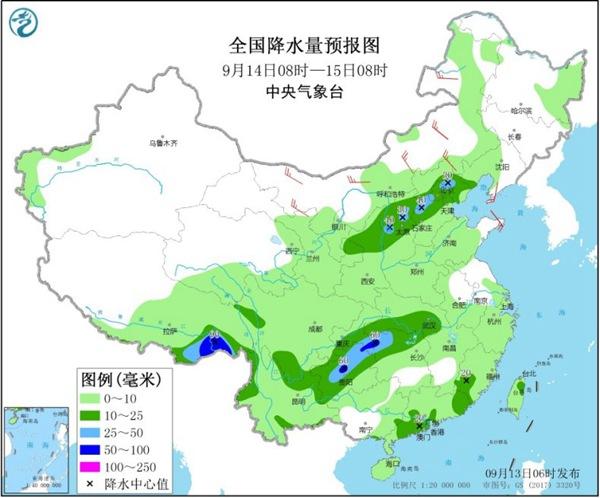According to China Weather News, it is estimated that for three days from today (September 13-15), the rainy weather in Southwest and South China will continue. There will be heavy rains locally, and there will be a round of rainfall in Northwest and North China.
Under the influence of cold air and rainfall, the temperature in many places will hit a new low after the beginning of autumn this year.
Recently, the southwestern region has been shrouded by continuous rain. Judging from the precipitation anomaly in the past 10 days, the precipitation in Guizhou and other places has been more than normal in the same period, and in some areas it has more than doubled.
In addition to the continuous rain in the southwest, scattered heavy rainfall has been frequent in the coastal areas of South China recently.
The Central Meteorological Observatory predicts that in the next three days, there will be moderate to heavy rains in the north-central Jiangnan, western South China, and eastern southwestern regions, with heavy rains in some areas, and local strong convective weather such as short-term heavy precipitation.
At the same time, the northern rainfall will advance from west to east, spreading to the eastern part of Northwest China, northern China, northeast China and other places. Among them, the rainfall in northern China will mainly be from the 13th to the 14th, and the rainfall in the northeast will also increase from the 15th to the 16th.
Specifically, today, there are moderate to heavy rains in parts of eastern Northwest China, the Loop of Inner Mongolia, eastern and southern Southwest China, southern China, and southeastern Tibet. Among them, western Guizhou, northeastern Yunnan, southeastern Tibet, etc. There was heavy rain locally.
Tomorrow, there will be moderate to heavy rains in parts of northern Shaanxi, central and northern North China, eastern Southwestern, northwestern Jiangnan, southern Jianghan, southern China, and southeastern Tibet. Among them, southeast Chongqing, north central Guizhou, northwest Hunan, There were local heavy rains in southeastern Tibet and other places.
On the 15th, there were moderate to heavy rains in parts of eastern Inner Mongolia, western and southern Northeast China, central and northern North China, southern Jianghan, central and northern Jiangnan, and eastern Southwestern China. Among them, northeastern Hebei, western Liaoning, southern eastern Inner Mongolia, Heavy rains occurred in parts of southern Anhui, southeastern Hubei, northern Hunan, and southwest Guizhou.
Affected by the cold air and frequent rainfall, the temperature will be lower than normal for more than a week in the next week, and new low temperatures after the fall will often occur, especially in the northwest and southwest regions.
Rainfall will be frequent in the southwestern region in the coming week, including Chengdu, Guiyang, Chongqing and many other places where the highest temperature will remain below 25°C.
Under the influence of cold air and rain, the temperature in Northwest China is also generally depressed. The highest temperature in Lanzhou, Yinchuan, Urumqi and other places hovers around 20℃, and the lowest temperature in many places will drop below 10℃, setting a new low after the beginning of autumn.
In the Northeast, North China, Jianghuai, Jiangnan and other places, the temperature will fluctuate mostly under the influence of cold air and rainfall in the coming week.
Later next week, North China, Jianghuai, and Jiangnan may usher in the coldest morning after the beginning of autumn. For example, Beijing and Tianjin will have the lowest temperature around 15℃ on the 17th, and Hangzhou and Wuhan will drop below 20℃ from the 18th to 19th.
Meteorological experts reminded that there has been a lot of rainfall in the southwest and other places recently, and the public should pay attention to preventing secondary disasters and adverse effects on agriculture.
At the same time, generally in the Bailu solar term, the range continues to expand in autumn, and the summer-autumn dividing line usually advances along the Huai River. The public should pay attention to temperature changes and add clothing in time.

